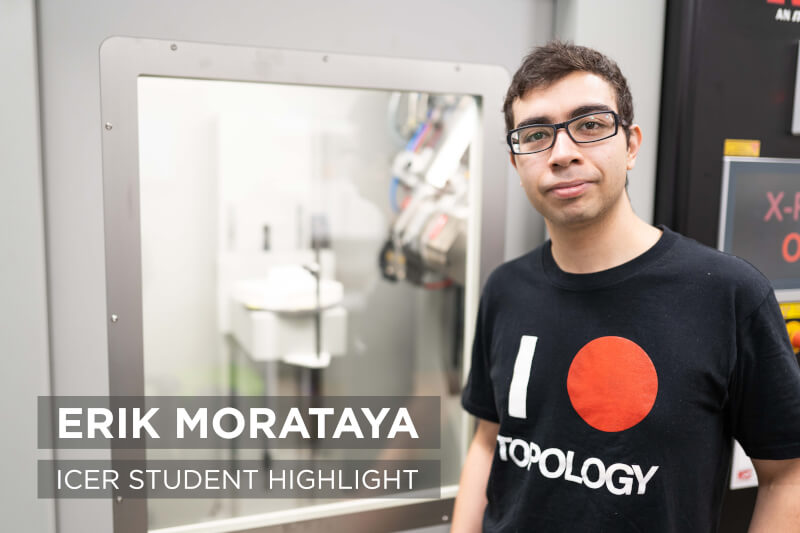Using Topology & Morphology to Quantify & Contextualize 3D Plant Structures

Erik Amezquita is a second-year Ph.D. student in the department of Computational Science, Mathematics and Engineering (CMSE) at MSU. There, he works under the guidance of Dr. Elizabeth Munch and Dr. Dan Chitwood. His research centers around trying to quantify morphology and shape in relation to plant structures. Quantifying shape means determining the parameters by which to define physical characteristics of plants. For example, Erik states that it is essentially determining “how round is round? How stretched is stretched? How compact is compact?” Plants come in an extremely diverse array of shapes, which makes it difficult to bring them to a common ground to compare them. To answer these questions, Erik turns to topology. In his words, topology is “the mathematical study of shapes in a very abstract sense.” It allows him to quantify the properties of an object, calculate how data can be used to determine physical transformations, and how the entirety of it interrelates. He obtains his information using an X-Ray CT scan in the basement of the plant biology building, where he takes myriad detailed images of plant samples. This is to get an accurate map of the three-dimensional structure of a strain of plant. This information pertaining to the 3D structure of the plant is then analyzed for connections to other traits.
Plant shape and its traits can be intimately related. The morphology of a plant can determine its yield or its preferences for climate and terrain. Understanding the shape behind these traits is vital to improve different crops through breeding, especially these days with ever-changing weather and soil conditions.
Erik’s work is significant because it treads very new ground. He states that “not until the past 15 years have mathematicians tried to apply this kind of techniques to study of shapes to real-life data.” This is largely due to the traditionally abstract nature of topology and morphology in mathematics. Exploring real-life applications for this niche area of study is incredibly new and not much is known about it. The relationship between topology and plant science is largely unknown. There is still a long way to go to bring from theory to practice the tools needed to unveil such a relationship.
This presents the most pressing challenges for Erik. He says on some days “it takes courage to wake up every day and commute to the office” because of the chance that all his efforts might be fruitless. Nonetheless, other days are quite fruitful as more topological pieces fit together and the plant biology puzzle is revealed one tiny step at a time. This project is also difficult due to his limited background in biology since the undergraduate program he attended was so highly specialized in pure mathematics. He mentioned that his advisor has been very supportive in helping him overcome these challenges by meeting with him to go over the biology material necessary to complete the research.
Also, he states that HPCC services have helped him tremendously in processing the massive image files produced by the X-Ray CT scan. Since the images generated by the X-Ray CT scan are so detailed, the image file for a single sample of barley is one gigabyte. Given that he uses hundreds of samples for each plant (barley, nuts, oranges, and mandarins), it would be impossible to complete his research without HPCC services.
Erik’s work hopefully will pave the way for new scientific breakthroughs in plant biology and also in the methods we use to analyze samples. Ideally, the development for increased practical usage for topology will lead to a greater wealth of objective knowledge in biology, and a vast variety of related fields. By finding more and more ways to integrate what were once highly abstract concepts into the tangible reality, Erik and other talented researchers will find more ways to understand and analyze the world around us.
